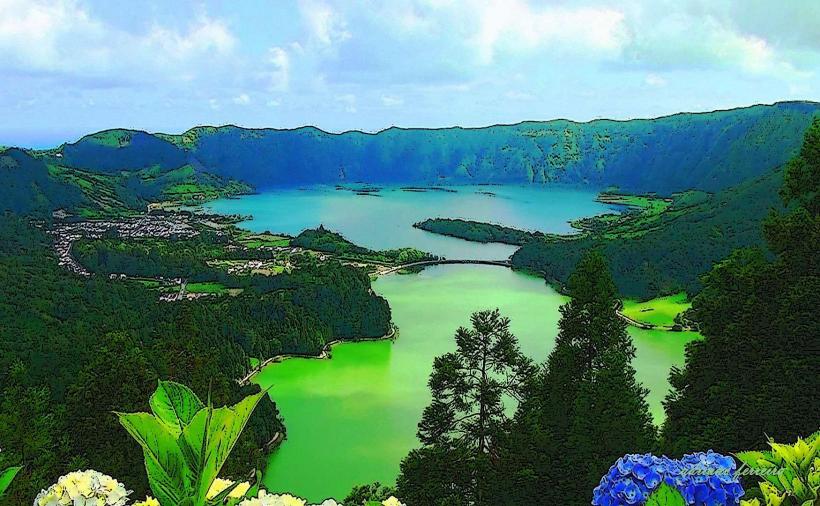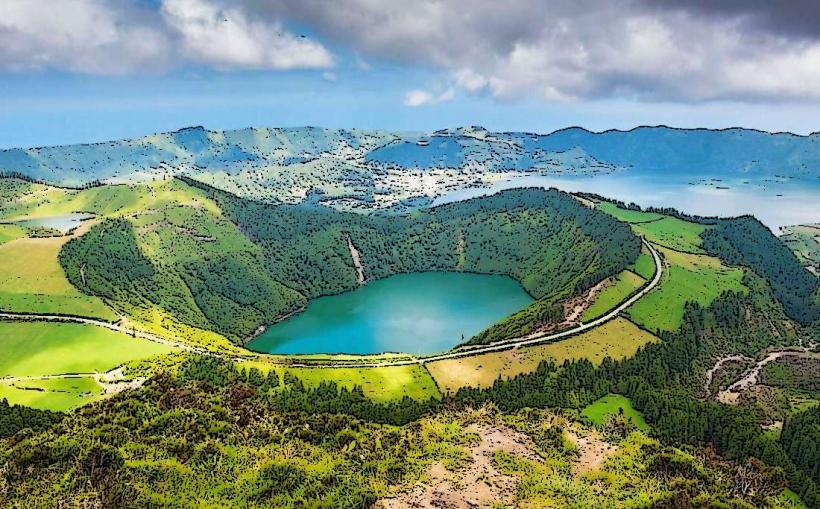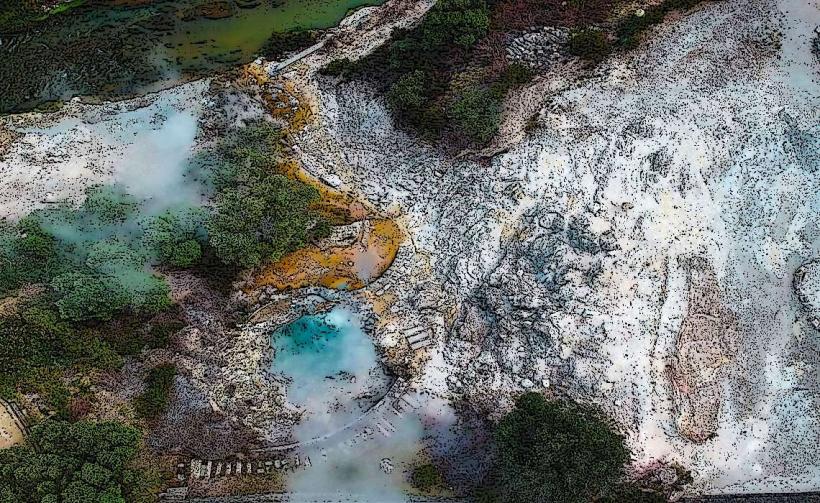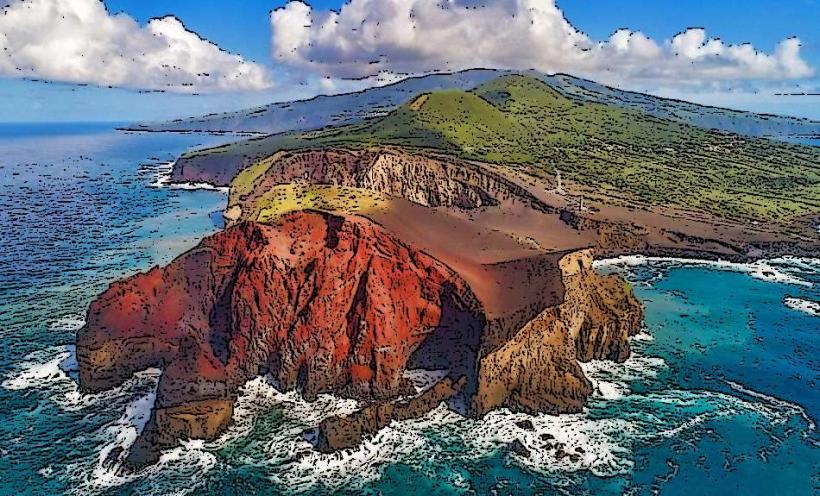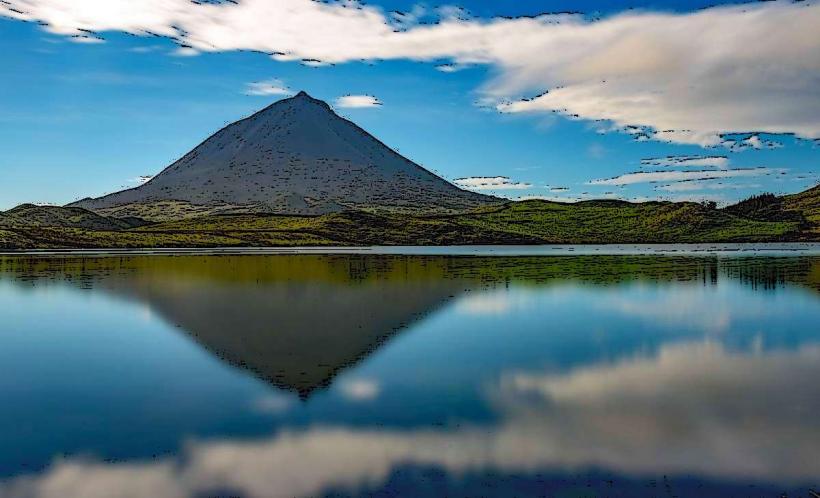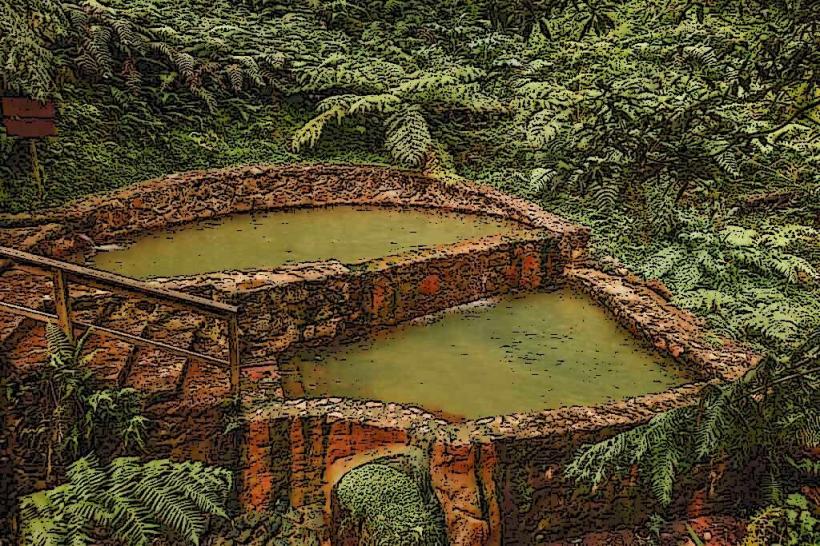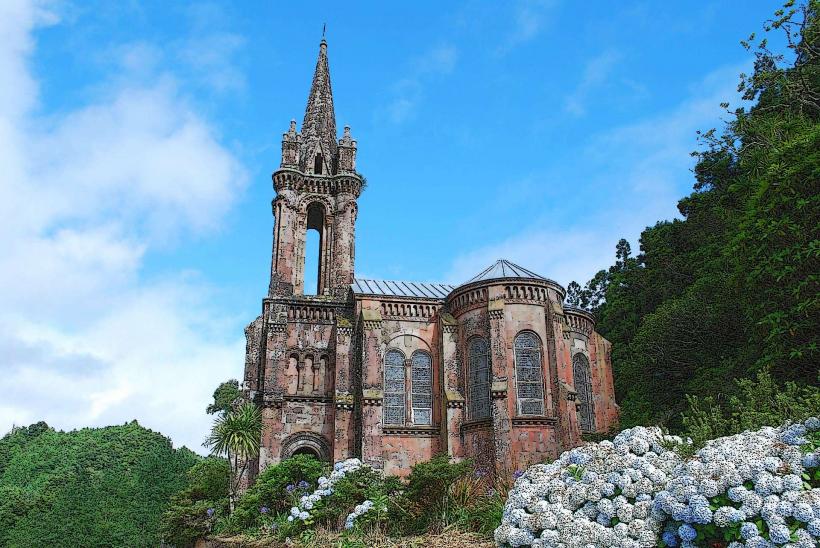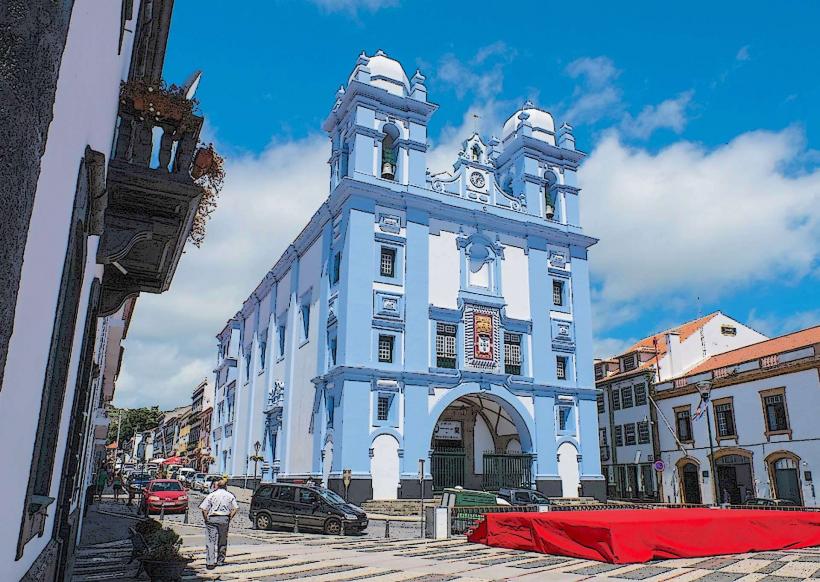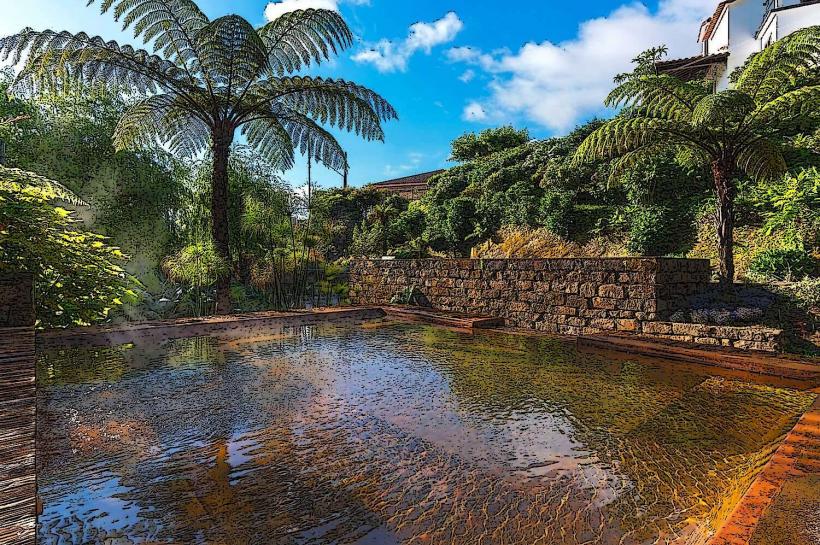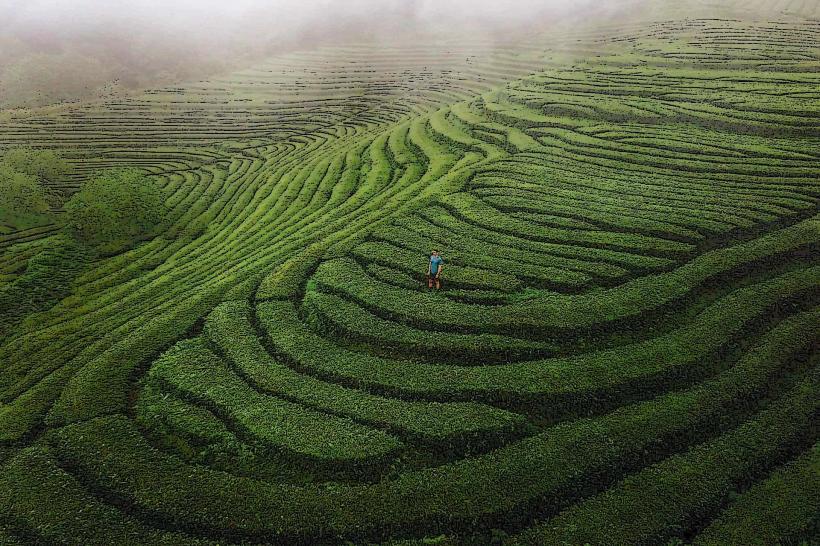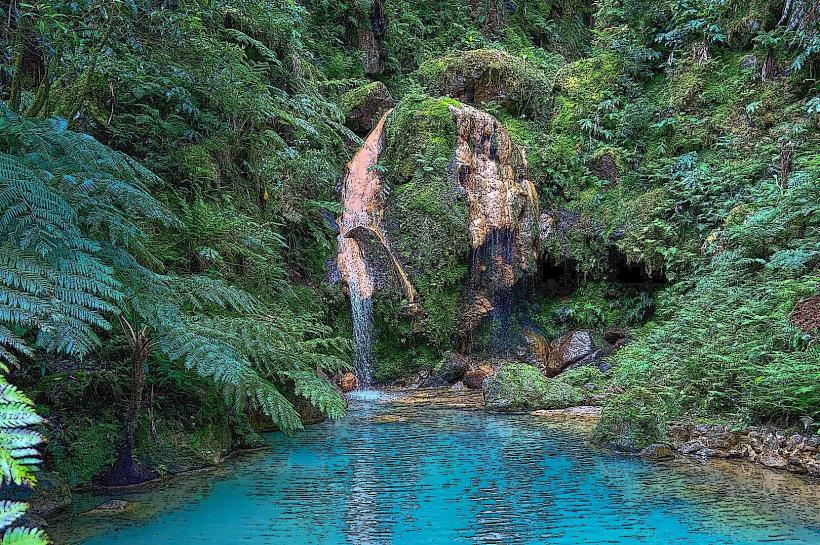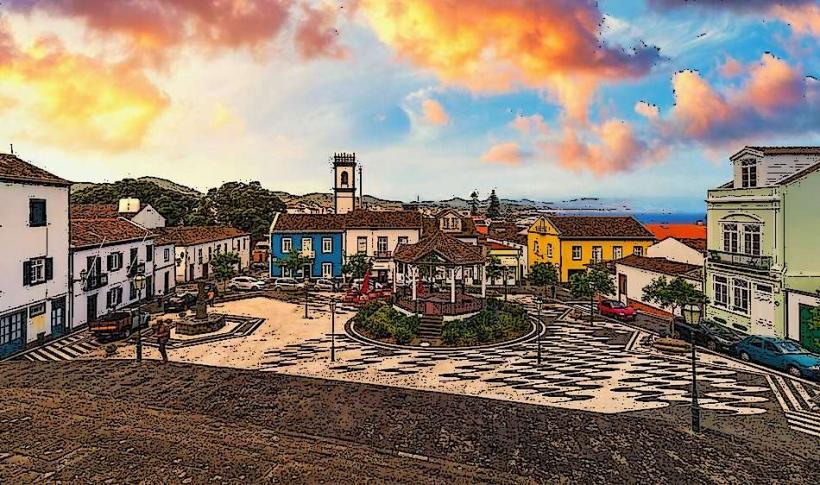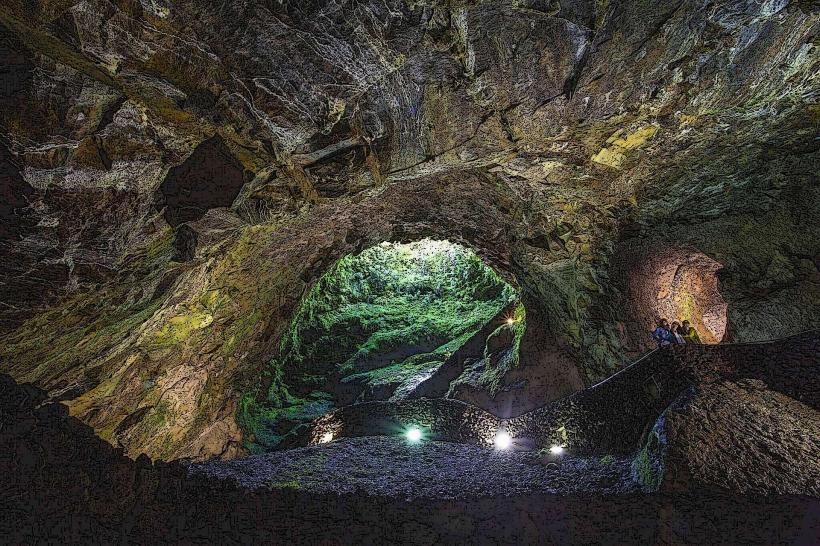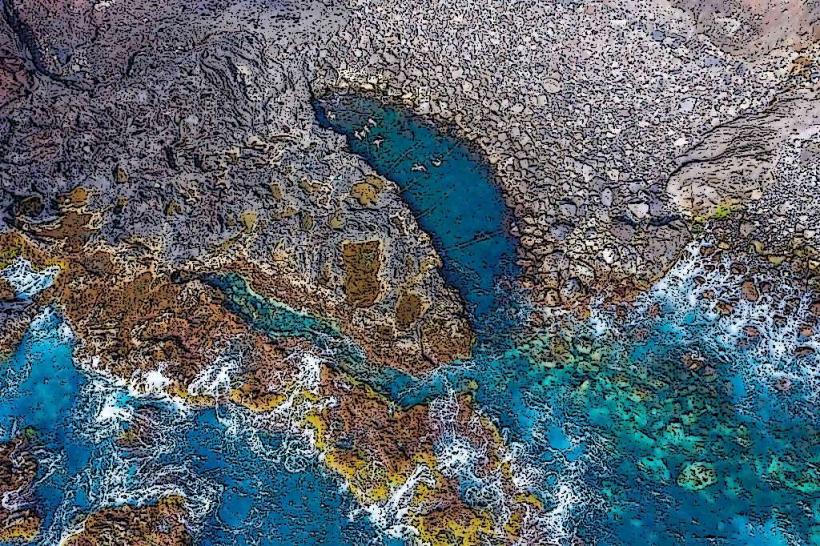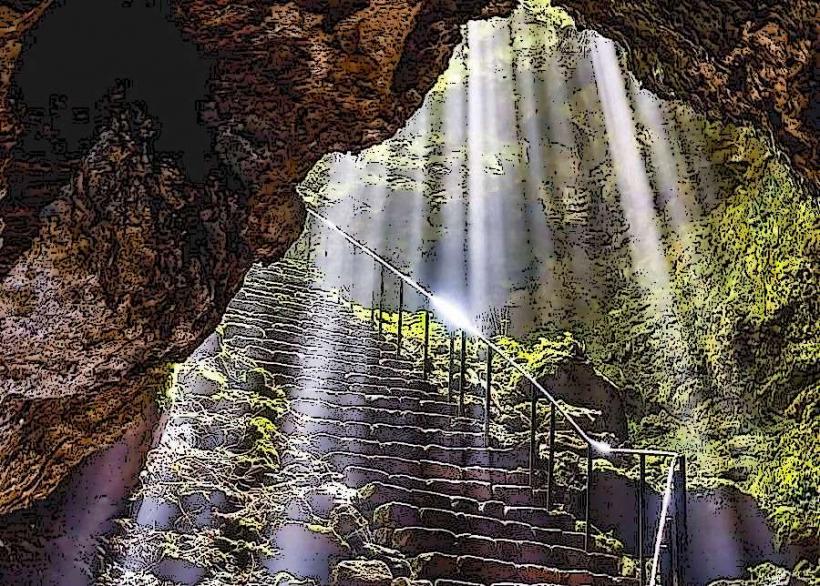Information
Landmark: Terra Nostra GardenCity: Azores
Country: Portugal
Continent: Europe
Terra Nostra Garden, nestled in Furnas Valley on São Miguel Island in the Azores, Portugal, is renowned for its lush vegetation, serene lakes, hot springs, and rich botanical diversity. Originally developed in the 18th century, Terra Nostra has become one of the Azores' most iconic gardens, drawing visitors from around the world to experience its unique blend of natural beauty, geothermal activity, and horticultural excellence.
1. History
- Terra Nostra Garden was first established in 1775 by Thomas Hickling, a wealthy Boston merchant and U.S. Consul, who created a summer retreat in Furnas. This initial area, called the "Yankee Hall," included a modest garden and pond. Over the years, the garden expanded under different owners, notably the Viscount of Praia, and, in the late 19th century, under the Bensaude family, who undertook major restorations and enhancements.
- The garden's extensive collection of flora was developed mainly from the 1840s onwards, emphasizing exotic plants from across the globe.
2. Layout and Features
- Botanical Diversity: Terra Nostra boasts over 2,000 species of trees and plants, including many rare varieties. The garden is organized into different sections, each representing specific types of flora, from endemic Azorean species to exotic plants.
- Hot Spring Pool: The centerpiece is the large, iconic thermal pool, filled with mineral-rich, iron-laden hot spring water. This geothermal pool is a unique draw, providing a therapeutic bathing experience amid lush surroundings.
- Camellia Collection: Terra Nostra is celebrated for its collection of camellias, one of Europe’s most extensive, with over 600 varieties that bloom vibrantly during the winter months.
- Palm Avenue and Fern Gardens: A section of the garden showcases a collection of palm trees and tree ferns, some of which are rare or endangered species, offering visitors a glimpse of subtropical flora.
- Cycad and Conifer Collections: These areas exhibit ancient plant species, like cycads and various conifers, adding to the botanical richness.
3. Thermal Pools and Springs
- Main Thermal Pool: The iron-rich, orange-colored thermal pool is kept at around 39°C (102°F), ideal for relaxation. Surrounded by dense vegetation and subtropical trees, it offers an atmosphere of tranquility.
- Jacuzzi Pools: Terra Nostra also has two smaller Jacuzzi-style thermal pools with warmer water for a more secluded experience.
- The springs are naturally heated by volcanic activity beneath Furnas, known for its geothermal phenomena. The mineral composition is thought to have therapeutic effects, particularly for skin and joint issues.
4. Plant Collections and Botanical Highlights
- Endemic Azorean Flora: The garden prioritizes conserving Azorean native plants, many of which are rare and found only on the islands.
- Exotic Flora: The garden’s botanical collection spans diverse climates, from tropical and subtropical plants to temperate species, illustrating São Miguel’s unique microclimates.
- Seasonal Blooms: The garden’s plants bloom at different times of the year, making each season distinct. Spring and early summer are particularly vibrant.
5. Visitor Experience and Activities
- Guided Tours: Terra Nostra offers guided tours that delve into the garden’s history, botanical collection, and geothermal features.
- Hiking Trails: Several paths and trails wind through the garden, providing opportunities for leisurely walks, photo opportunities, and peaceful moments within nature.
- Garden Restaurant: The Terra Nostra Garden Hotel includes a restaurant that serves local cuisine, including dishes cooked using geothermal heat, like the famous “Cozido das Furnas.”
- Relaxation and Wellness: With geothermal pools and lush surroundings, the garden provides a relaxing retreat focused on natural wellness.
6. Conservation and Education
- Terra Nostra Garden plays a key role in botanical conservation, focusing on endemic and rare plant preservation. Educational programs and partnerships with universities and botanical gardens aim to raise awareness about environmental sustainability and the importance of biodiversity.
7. Best Times to Visit
- Winter to Spring (December to March): Ideal for camellia enthusiasts, as many varieties bloom during this time.
- Summer: Offers mild weather and vibrant greenery, although it may be busier with tourists.
- Autumn: Known for a quieter experience with beautiful seasonal changes in plant colors.
Terra Nostra Garden is not only a place of natural beauty but also a significant cultural and scientific landmark. Its integration of geothermal features, diverse plant collections, and a serene environment make it one of the Azores' most memorable sites, blending human history with nature’s wonders.

